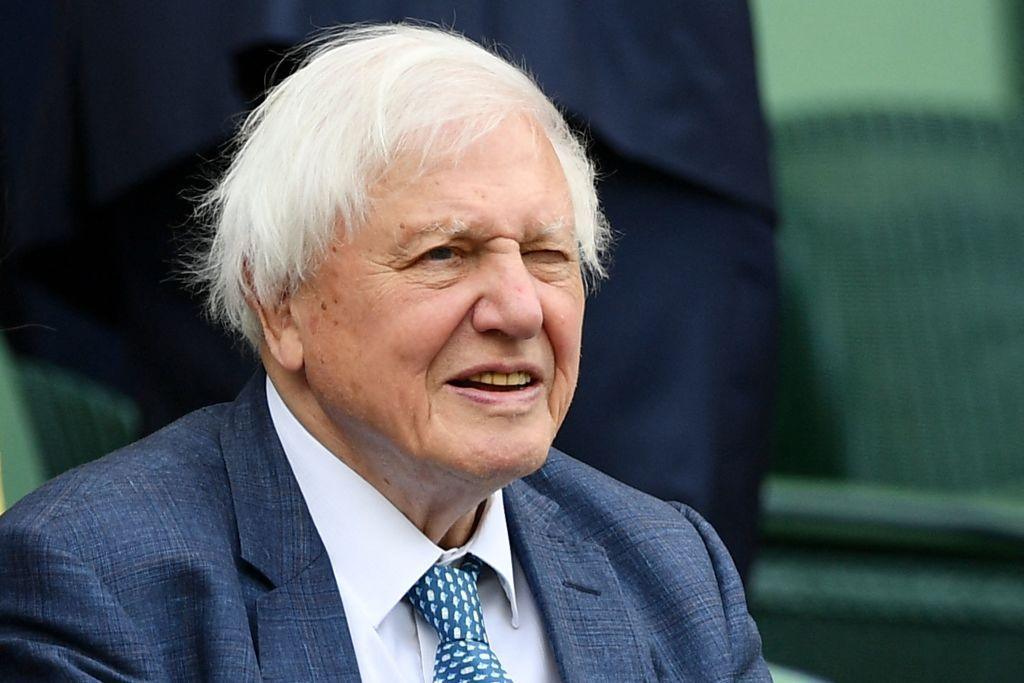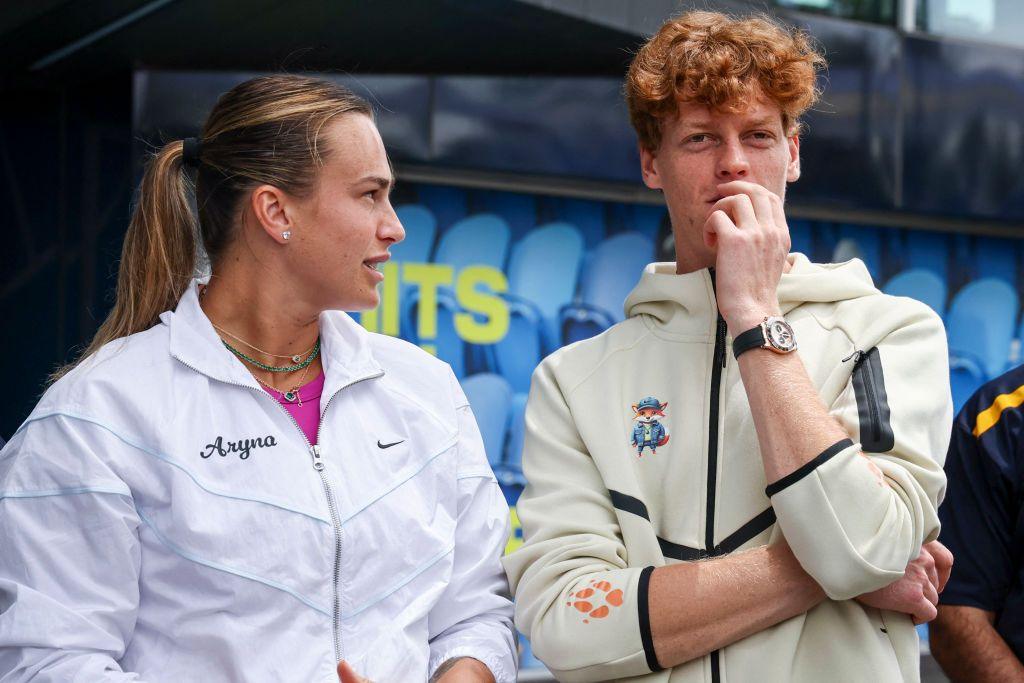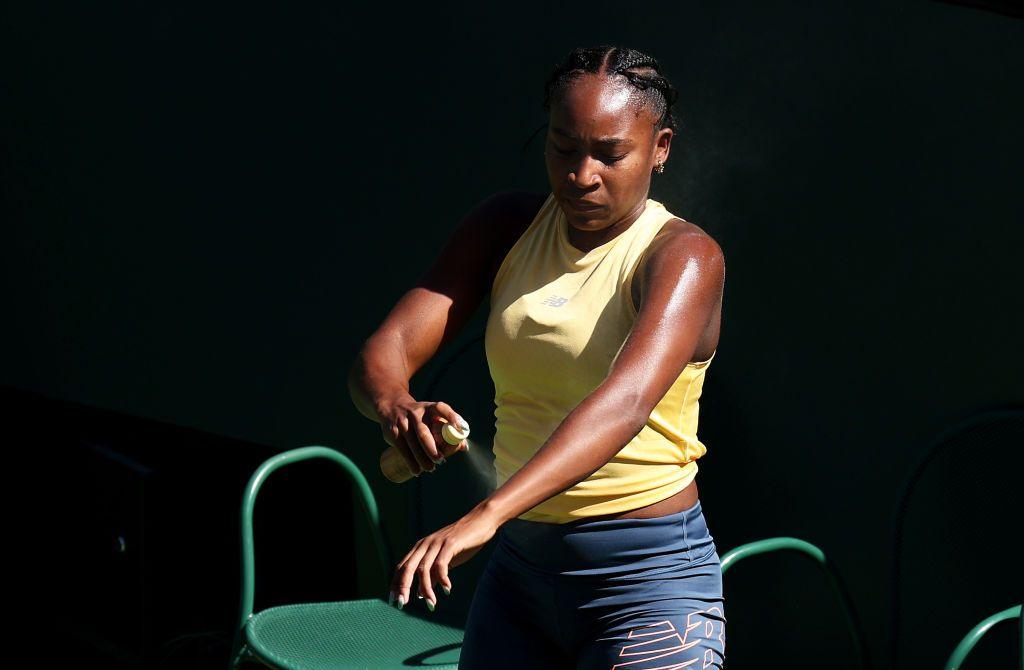Wimbledon 2025: Empty seats, curfew, seedings, and line call voices explained

Why are there empty seats at Wimbledon?
John in Bedford
There were plenty of unoccupied seats visible in the stands of both Centre Court and Court One on the opening day of the 2025 Championships, even though ballot tickets sold out months ago. Why?
Wimbledon operations manager Michelle Dine spoke to BBC Sport on Tuesday.
“Because it was so hot, there are a lot more people roaming the grounds, finding shade,” she said.
“We’re putting out messages all the time telling people to go to get water. So maybe there were a few more people that were off court just trying to find some shade and take a bit of a break.”
Spectators are only allowed to move around at Wimbledon during changes of end, which occur after every two games. If a spectator purchases food or drink, the time spent exiting the arena, queuing, returning, and waiting for a change of ends, could mean missing a significant chunk of play.
Play begins at 11am and can run for 12 hours. Some fans may not spend the whole day at SW19 – travel plans may mean some arrive a few hours after play begins, or leave before it ends.
A ticket to one of the two show courts at Wimbledon also entitles fans to watch matches on any of the outside courts. There may be points of the day when fans take a break from their designated show-court seat in order to watch another match they would prefer to see elsewhere.
The recently knighted Sir Gareth Southgate and Sir David Beckham sat together in the Royal Box on the opening day of the 2025 Championships
Why do men play five sets and women three at Wimbledon?
Russell in Frome
Men playing best-of-five-set matches while women play only three is a tradition dating back to the late 19th century.
When Wimbledon’s men’s singles tournament was first held in 1877, best-of-five matches were held. When the women’s singles followed in 1884, they played best-of-three-set matches because of a perception they had less stamina.
Men continue to play best-of-five sets at all four tennis Grand Slams, reverting to best-of-three at other tournaments throughout the year.
Five-set matches ‘not needed’ – Pegula
What are tennis balls made of?
Zac in Lancashire
Tennis balls are made of a hollow rubber core, filled with pressurised air, with compound felt cover comprised of cotton, nylon and wool.
But that hasn’t always been the case.
When modern lawn tennis developed in the mid-19th century, the first balls were made entirely of rubber. Wear and tear to the outside of the rubber eventually led to efforts to create a protective covering.
Flannel covering began to be stitched on to balls, improving both their durability and performance, and the solid rubber core was eventually replaced by pressurised gas.
Why are tennis balls yellow?
Owen in Manchester
In the past, tennis balls were traditionally black or more often white, depending on the colour of the court.
All that changed when David Attenborough – now the world’s most famous naturalist – was controller of BBC Two in the early days of his career in television.
As colour TV sets became more commonplace in the late 1960s, Attenborough was determined to improve the quality of full-colour broadcasting. He sent four colour cameras to Wimbledon in 1967, believing a widely popular sports event was the perfect canvas for colour to be brought into the nation’s living rooms.
But the white ball was often hard to make out against the white lines of the court, and viewers struggled to tell if shots were landing in or out.
Attenborough suggested a change of colour to something more visible. The International Tennis Federation ran a series of tests to find out which colour ball could be seen most clearly, eventually settling on fluorescent yellow.
The yellow balls were first used at the US Open in 1973, before belatedly being adopted at Wimbledon in 1986.

Sir David Attenborough’s impact on tennis goes far beyond attending Wimbledon
Why do players examine multiple balls before serving?
Robert in Brixton
Tennis players commonly take three balls from the ball crew before serving.
They will generally give one back, put one in their pocket, and keep hold of the third. The second ball is kept in the pocket so that if the first serve is a fault, play can continue without another ball needing to be passed to the player.
When holding the three balls, players typically examine them by sight and touch before choosing which to retain and which to give back. They do so in order to try to gain an advantage.
Every time a tennis ball is hit, it loses air pressure inside, and the hair on the outside becomes more frayed.
A ball that has a high level of air pressure and smooth exterior will travel faster through the air, making it preferable for a fast first serve.
Meanwhile, a ball which has slightly less air pressure and more frayed exterior can be more suitable for a slower serve with more spin, making them potentially useful for the second serve.
Players assess their options and decide which balls are best for them based on their playing style and the state of the play in the match.
How are seedings decided at Wimbledon?
Beth in Essex
There are 32 seeds in each of the men’s and women’s singles draws at the four Grand Slams. Seeding is decided based on players’ rankings in the run-up to the tournament. For the 2025 edition, the cut-off date was 23 June.
For the men’s singles, this is done via players’ ATP Tour rankings. For the women’s singles, the WTA Tour rankings are used. Players are seeded in the order in which they rank.
Sometimes, a player’s seed number can be higher than their ranking if higher ranked players withdraw.
For example, Casper Ruud, Arthur Fils and Sebastian Korda would all have been seeded this year, but withdrew because of injury. As a result, Alex Michelsen, Tallon Griekspoor and Matteo Berrettini were seeded 30th, 31st and 32nd respectively.
Seeds are also given to doubles teams across the men’s, women’s and mixed competitions based on their rankings.

Aryna Sabalenka and Jannik Sinner are the top seeds in the singles at Wimbledon in 2025
Why does Wimbledon have an 11pm curfew?
Craig in Wrexham
Introduced alongside the unveiling of the Centre Court roof in 2009, the All England Club announced an 11pm curfew on play at Wimbledon.
The curfew was applied to “balance the consideration of local residents with the scale of an international tennis event that takes place in a residential area”.
Another key consideration was the “challenge of transport” in and out of Wimbledon, with public transport options for fans diminishing later in the evening.
Why don’t tennis players get sunburnt?
Becky in Cumbria
Players apply sun cream before matches, and may do so again during changes of end.
Sweating and using towels may diminish its efficacy, which is why players can sometimes be seen adding more protection during matches.

Players can be out on court for hours every day during the height of summer
Who are the voices shouting line calls at Wimbledon?
Rainer in Oxford
Now that line judges are a thing of the past at Wimbledon, automated line calls can be heard when a shot is hit out of play or a player faults on a serve.
Players and fans have complained the voices have been hard to hear compared to the bellows line judges used to let out when called into action.
The voices broadcast by the technology at the All England Club are those of its behind-the-scenes staff and tour guides.
What kind of cream is used with strawberries?
Sarah in Derby and Jack in Nottingham
The cream used in the classic Wimbledon snack is double cream, which is sourced from British dairies.
There are also vegan options available.
This article is the latest from BBC Sport’s Ask Me Anything team.
What is Ask Me Anything?
Ask Me Anything is a service dedicated to answering your questions. These question were submitted by Chris in Sutton Coldfield, Heidi in Leeds, Zac in Lancashire, David in Chesterfield, Beth in Essex, Sarah in Derby, Craig in Wrexham, Becky in Cumbria, Angela in Chichester, and Lorna in Oxfordshire. Thanks, all!
We want to reward your time by telling you things you do not know and reminding you of things you do.
The team explores everything you need to know and calls upon a network of contacts including our experts and pundits.
We answer your questions from the heart of the BBC Sport newsroom, and go behind the scenes at some of the world’s biggest sporting events.
Our coverage spans the BBC Sport website, app, social media and YouTube accounts, plus BBC TV and radio.
More questions answered…
Source link






